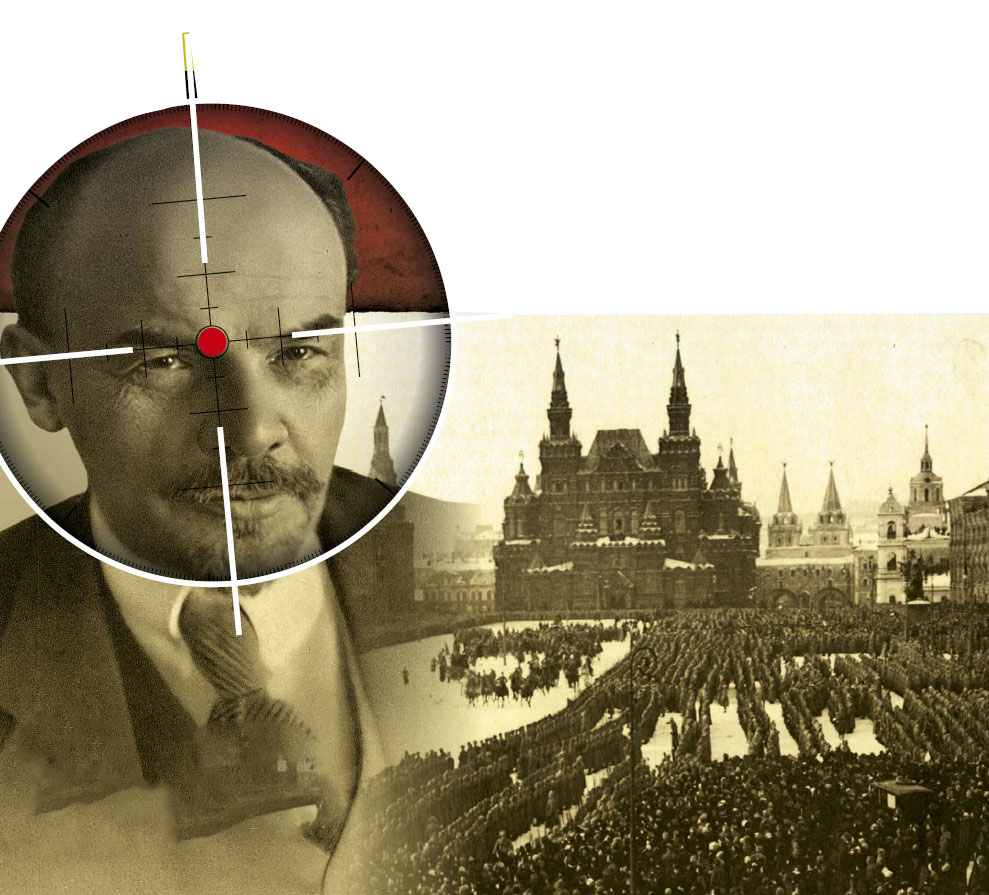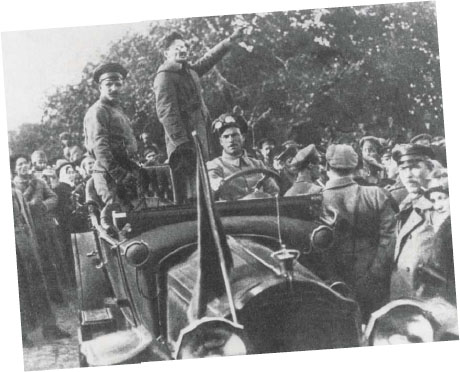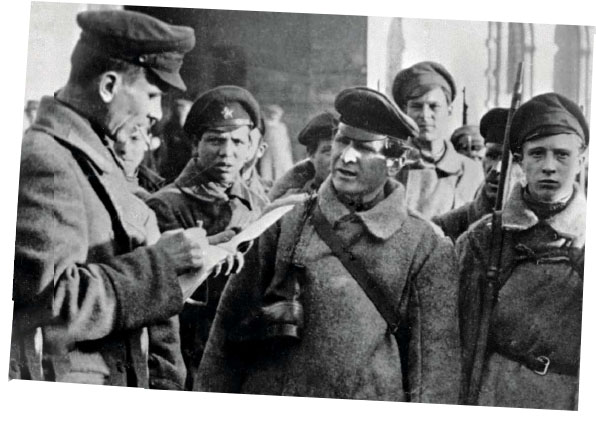
In the wake of the Bolshevik Revolution, communism now posed the greatest threat to European political stability, spearheaded by leader of the Russian Republic, Vladimir Lenin
The night was thick with frost and the Moon hung low in the sky. On the banks of the River Sestra – the frontier between Finland and Russia – a lone figure could be seen crouching in the shadows.
When he was sure that no one was watching, he slipped into a boat and rowed in silence across the fast-flowing water. It was November 1918, and that shadowy figure was a British spy named Paul Dukes. His codename was ‘ST 25’, and he was to prove one of the most The ective undercover agents ever to work inside an enemy country.

Bolshevik soldiers march through the Red Square in Moscow, shortly after the 1917 revolution
In successfully smuggling himself inside Soviet Russia, Dukes was placing himself in the greatest possible danger. He had come to spy on Lenin’s Bolsheviks, working in disguise under a variety of aliases. He had fake identity papers, a list of safe houses, and a network of contacts that he would need if he were to stay one step ahead of the Cheka, Lenin’s dreaded secret police.
Dukes had no illusions as to what would happen to him if he were to be caught: there would be a show trial and then he would be summarily executed. The stakes could scarcely have been higher, but Dukes thrived on danger. In slipping into enemy Russia, he was embarking on a highly dangerous game of Russian roulette.
HOUSE OF CARDS
Paul Dukes was one of a small band of British spies smuggled into Moscow in the aftermath of the 1917 Russian Revolution. Their task was to infiltrate every branch of Lenin’s revolutionary government and subvert the Bolshevik cause wherever possible. It was work of the utmost importance. Lenin’s avowed aim was global revolution. He wanted to topple all the Western democracies – governments still reeling from the slaughter of World War I. Revolution was in the air, with violent unrest in Germany and political agitation in Britain. It was felt that one push might bring the whole house down.

Leon Trotsky, ‘People’s Commissar of Military and Naval A airs’, makes a speech to soldiers of the Red Army, 1918
Lenin sought to exploit the unrest by founding the Comintern, an organisation whose avowed goal was to spread the gospel of revolution. Paul Dukes and his fellow spies were sent into Russia to ensure that Lenin failed in his ambition.
Not everything went to plan. There were mishaps, violent shoot-outs and gruesome torture for agents who fell into the hands of the Cheka. But the biggest disaster of all was home-born. One of the British spies – Sidney Reilly – was to ‘go rogue’ and wildly exceed his brief. Reilly was not content with stopping Lenin: he vowed to assassinate him.
“After welcoming him into their circle, he was permitted to attend all their most secret meetings”

Members of the Cheka, the Soviet Union’s notorious security service, receive an assignment
Reilly’s story, along with that of his fellow spies, is more colourful than any James Bond movie. And the plot to kill Lenin is so outlandish as to be almost unbelievable. Even 007’s creator, Ian Fleming, admitted that the story of MI6’s spies in Russia was better than any fictional offering: “James Bond is just a piece of nonsense I dreamed up. He’s not a Sidney Reilly, you know!”